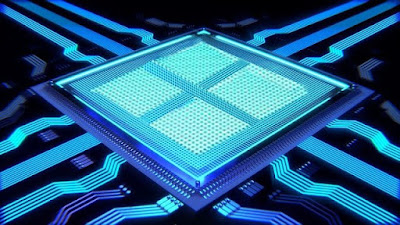What is Multi core Processor ?
A Multi-core processor is a chip that contains two or more processors. Each processor is capable of performing different tasks simultaneously. For an example, if one processor is assigned with the task of data processing the other will take care of data storage.
Why is Multi core Processor used ?
The setup is similar to a dual core processor. Depending on the number of cores and types, there are different kinds of multi core processors. The purpose of using multi core processor is to get good performance. It was introduced to overcome the physical limitations faced by a single core processor.
Although approaching multi core processor offers many benefits, there are certain risks associated with its usage. If you are not convinced of upgrading to a multi core processor, the following pros and cons will help you with the decision.
In this article, you will get the information on 5 Advantages and Disadvantages of Multi core Processor | Drawbacks & Benefits of Multi core Processor. Through this post, you will know the pros and cons of using multi core processor.
Let's get started,
Advantages of Multi core Processor
1. Performance
On default a multi core processor allows more work to be done than a single core processor. The cores present on an integrated chip is placed at a distance where higher clock speeds are achieved. Therefore, the signals do not need to travel far to reach its destination plus its persistent too. The speeds are significantly higher than a separate processor.
2. Reliability
Always in multi core processor, softwares are allocated on different cores. When a single software happens to undergo faults, it will not impact the other. Whenever there is a defect it is restricted to a single core. Thus, multi core processors are able to tolerate faults to a greater extent.
3. Software Interactions
Even if there are software executed on different cores, it will still interact with one and another. A multi core processor undergoes a process known as spatial and temporal isolation. These processes makes sure that core threads are never delayed.
4. Multitasking
A multi core processor can make an operating system run two or more tasks noncurrently. Even if it possible to perform tasks of the same application simultaneously. For an example, a photoshop application can be used as two tasks simultaneously.
5. Power Consumption
Performing multitasking essentially with a multi core processor requires less amount of power. Only the part of the processor will be working to generate heat. Eventually, the power consumption is reduced resulting in less battery usage. However, some operating systems require more power than the other.
Disadvantages of Multi core Processor
1. Application Speed
Although a multi core processor is designed for multitasking, it's speed is not significant enough. Each time when an application is processing, it tends to jump from one core to another. As a result, the cache gets populated compensating its speed.
2. Jitter
When the number of cores in the multi core processor increases, it will cause more interferences leading to excessive jitters. As a result, your O/S might potentially experience degrades in the performance of programs and frequent failures. Only thorough synchronization and using of microkernel the user will be able to handle jitter.
3. Analysis
Performing two or more tasks at the same time requires more number of memory models. This makes analysis a difficult process in a multi core processor. Especially, it is hard to measure time limits and may not be accurate.
In addition to that, if the number of cores increases, it can cause complexity in the interference analysis. Thus, the O/S will not be able to deliver expected performance.
4. Resource Sharing
Different resources both of which internal and external are shared by a multi core processor. These resources include main memory, system bus, memory controller and networks. Due to this, whatever the application which is executed on the same core will have a tendency to get interfered. These type of interference can be of both spatial and temporal isolation.
5. Software Interference
A software interference that is caused due to the resource sharing can pose problems to spatial and temporal isolation. This chance is even greater if there are more number of cores. More cores essentially means that there are high number of interference paths. It is almost impossible to analyze each and every interference paths.










Blogs are a testament to the power of words. blogger
ReplyDelete